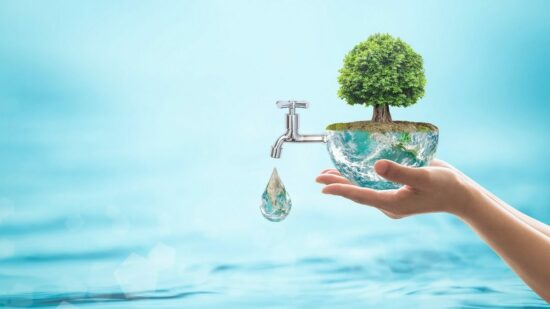

The Role of Technology in Water Conservation
Water conservation is a critical issue that requires immediate attention and action. The global water crisis is escalating, and it is estimated that by 2025, half of the world’s population will be living in water-stressed areas. The stark reality is that the world is facing a severe water shortage, and it is essential to adopt innovative solutions to conserve this precious resource. Technology plays a vital role in water conservation, and this article will explore the various ways in which technology can help reduce water waste, increase efficiency, and promote sustainable water management practices.
Smart Water Management Systems
Traditional water management systems are often inefficient, and water losses are common due to leaks, burst pipes, and unauthorized connections. Smart water management systems, on the other hand, utilize advanced technologies such as IoT sensors, Big Data analytics, and cloud computing to monitor and manage water distribution networks in real-time. These systems can detect leaks and anomalies in the system, enabling utilities to take prompt action to repair them, thereby reducing water losses.
Additionally, smart water management systems can optimize water distribution by analyzing consumption patterns and adjusting supply accordingly. This approach helps to reduce waste and ensures that water is delivered efficiently to households, industries, and agriculture.
Water-Saving Technologies
Several water-saving technologies have been developed to reduce water consumption in various sectors. For example, low-flow showerheads and toilets can significantly reduce water usage in households. Similarly, water-efficient appliances, such as washing machines and dishwashers, can help reduce water consumption.
In the agricultural sector, precision irrigation systems use advanced sensors and satellite imaging to optimize water application, reducing evapotranspiration and runoff. These systems can lead to significant water savings, particularly in areas where water is scarce.
Rainwater Harvesting Systems
Rainwater harvesting systems are an excellent way to conserve water by collecting and storing rainwater for non-potable uses such as flushing toilets, washing cars, and irrigating gardens. Advanced rainwater harvesting systems use sensors and automation to optimize water collection and storage, ensuring that the harvested water is utilized efficiently.
Water Recycling and Reuse
Water recycling and reuse technologies can significantly reduce the demand on potable water sources. Treated wastewater can be reused for non-potable purposes such as irrigation, toilet flushing, and industrial processes. Advanced water treatment technologies, such as membrane bioreactors and advanced oxidation processes, can produce high-quality recycled water that meets or exceeds drinking water standards.
Leak Detection and Prediction
Leak detection and prediction technologies use machine learning algorithms, acoustic sensors, and other advanced tools to identify potential leaks in water distribution networks. These technologies can detect even minor leaks, enabling utilities to take proactive measures to repair them before they become major issues.
Remote Monitoring and Control
Remote monitoring and control systems enable utilities to monitor water distribution networks and treatment plants in real-time, allowing them to respond quickly to any issues that may arise. These systems can also be used to control water treatment processes, ensuring that water quality is maintained at all times.
Big Data Analytics
Big Data analytics plays a critical role in water conservation by providing insights into water consumption patterns, identifying areas of inefficiency, and optimizing water management practices. Advanced data analytics can help utilities identify opportunities to reduce water waste, predict water demand, and optimize water supply.
Open Data and Transparency
Open data and transparency are essential in encouraging water conservation. By providing citizens with access to water usage data and information on water conservation initiatives, utilities can promote water awareness and encourage responsible water use.
Challenges and Opportunities
Despite the significant role that technology can play in water conservation, there are several challenges that need to be addressed. These include the high upfront costs of implementing technology, the need for skilled personnel to operate and maintain these systems, and the need for standardization and interoperability of technologies.
However, the opportunities that technology presents in water conservation far outweigh the challenges. With the increasing adoption of digital technologies, such as IoT, AI, and Big Data analytics, the water sector can become more efficient, responsive, and sustainable.
Conclusion
Water conservation is a critical issue that requires immediate attention and action. Technology plays a vital role in water conservation, and innovative solutions are already being implemented to reduce water waste, increase efficiency, and promote sustainable water management practices. From smart water management systems to water-saving technologies, rainwater harvesting systems, water recycling and reuse, leak detection and prediction, remote monitoring and control, Big Data analytics, and open data and transparency, the opportunities for technology to make a positive impact on water conservation are vast. As the global water crisis continues to escalate, it is essential that we harness the power of technology to ensure a water-secure future for generations to come.




